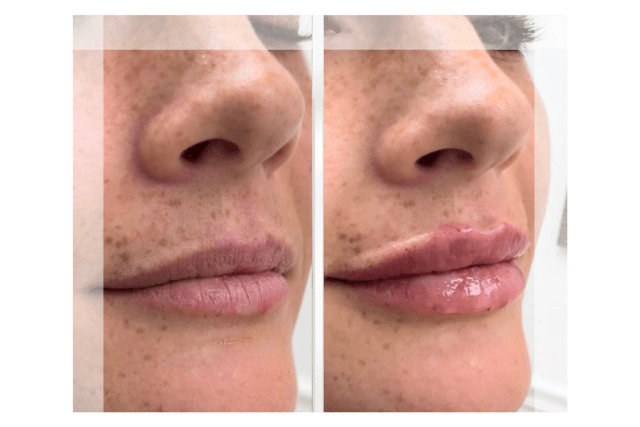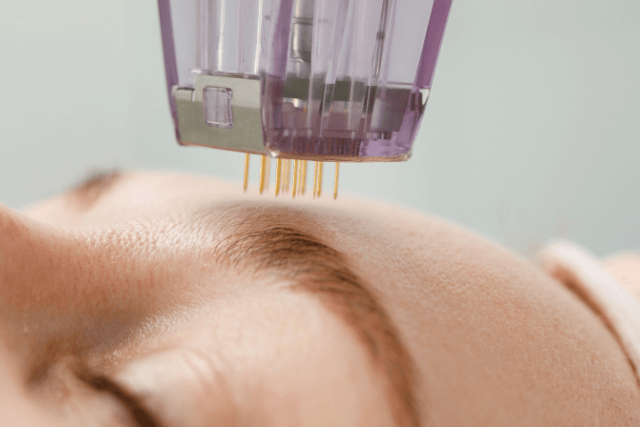Nipple correction surgery is a specialized procedure designed to improve the appearance, shape, or position of the nipples. Many people choose this surgery for cosmetic reasons, while others pursue it to address medical concerns or correct changes caused by injury, breastfeeding, or aging.
The goal of nipple correction surgery is to create a balanced and natural look that complements the breast. Whether the concern involves inverted nipples, asymmetry, enlarged areolas, or reconstruction after trauma, this procedure offers a safe and effective solution.
Because the nipples play a major role in both function and aesthetics, it is important to understand the options available. This blog provides a comprehensive overview of nipple correction surgery, including who may need it, what the procedure involves, recovery expectations, and more.
Common Nipple Concerns
There are several reasons someone might consider nipple correction surgery. While each person’s reason is personal, the issues often fall into common categories.
Inverted Nipple Condition
Inverted nipples occur when the nipple turns inward instead of pointing outward. This condition may be present from birth or develop later due to breastfeeding, aging, or certain medical conditions. Nipple correction surgery can safely bring the nipple to a natural outward position.
Nipple Asymmetry
Some individuals have nipples that differ in size, shape, or position. This may be mild or more noticeable. Asymmetry can make someone feel self-conscious, especially in swimwear or fitted clothing. Surgery can restore a more symmetrical appearance.
Enlarged or Puffy Nipples
In some cases, nipples appear enlarged, protruding, or puffy in a way that is out of proportion with the rest of the breast. This may happen after weight gain, pregnancy, or hormonal changes. Surgery helps reduce the size while preserving normal sensitivity.
Nipple Trauma or Scarring
Injury, surgery, or piercing can lead to changes in nipple appearance. Scar tissue may form or the nipple may appear misshapen. Correction surgery removes excess tissue or scarred skin to restore a natural look.
Who Can Benefit from the Procedure
Nipple correction surgery is suitable for adults of all genders who are in good health. People often seek the procedure for one or more of the following reasons.
Physical Discomfort
Some nipple issues cause irritation or pain, especially when wearing tight clothing. Inverted nipples may also trap moisture, increasing the risk of infections. Correction surgery addresses these concerns by improving the structure of the nipple.
Cosmetic Goals
Many individuals seek this surgery to boost their body confidence. Nipple shape or asymmetry may affect how someone feels about their appearance. When combined with other procedures such as breast augmentation or a lift, the overall result can be more balanced and natural.
Postpartum Changes
Pregnancy and breastfeeding can cause the nipples to stretch, flatten, or change direction. Even after stopping breastfeeding, these changes may not reverse naturally. In such cases, nipple correction surgery offers a long-term solution.
After Mastectomy or Trauma
For individuals recovering from mastectomy, chest surgery, or trauma, nipple reconstruction may be the final step in regaining their appearance. Skilled surgeons can create or reshape nipples using grafting or tissue repositioning techniques.
Nipple Correction Consultation and Evaluation
Before having nipple correction surgery, you will meet with a board-certified plastic surgeon. This consultation is essential to plan the best approach for your needs.
Detailed Examination
Your surgeon will examine the breast and nipple area to assess the concern. Measurements are taken to understand the shape and position of the nipple relative to the breast mound.
Medical History Review
The doctor will review your medical history, including any surgeries, chronic illnesses, medications, and lifestyle habits like smoking. These factors help determine if you are a good candidate for surgery.
Goal Discussion
You and your surgeon will discuss your goals and expectations. Clear communication is vital for achieving satisfying results. Photographs or diagrams may help illustrate possible outcomes.
Procedure Planning
The surgeon will explain the surgical plan, including the technique, incision placement, and how long the procedure will take. You will also receive information about risks, anesthesia, and expected results.
Types of Nipple Correction Procedures
There are several techniques that fall under the category of nipple correction surgery. As a result, your surgeon will select the most appropriate method based on your specific concern and desired outcome. In the following section, you’ll find a breakdown of the most commonly used procedures and what each one addresses.
Inverted Nipple Correction
To begin with, inverted nipple correction targets nipples that point inward rather than outward. This procedure releases the fibrous tissue or milk ducts that pull the nipple inward. Once the tension is released, the nipple is gently brought forward and secured in place. In addition, dissolvable stitches are used to hold the new shape during the healing phase, which helps the nipple maintain its new position.
Areola Reduction Surgery
On the other hand, when the pigmented area around the nipple (known as the areola) appears enlarged or stretched, areola reduction surgery can offer a clear solution. In this procedure, the surgeon removes a small ring of tissue and then sutures the areola into a smaller, more proportionate size. As a result, the breasts appear more symmetrical and refined. Moreover, this option is often combined with other breast procedures for enhanced results.
Nipple Reduction
If your concern involves long, wide, or protruding nipples, nipple reduction may be ideal. In particular, this procedure removes excess tissue from either the tip or base of the nipple. Consequently, it provides a smaller and more balanced appearance that aligns better with the rest of the breast. Furthermore, the procedure is relatively quick and typically heals well with minimal downtime.
Nipple Reconstruction
Finally, nipple reconstruction is a more complex procedure. In most cases, it follows breast cancer surgery, trauma, or gender-affirming surgery. Depending on the patient’s needs, techniques may include skin grafting, pigment tattooing, or folding of surrounding tissue to recreate a natural-looking nipple. Although more involved, this surgery plays a vital role in restoring both form and confidence after significant breast procedures.
Preparation for Surgery
Like any medical procedure, nipple correction surgery requires preparation to ensure a safe and smooth experience.
Preoperative Instructions
- Avoid smoking for several weeks before and after the procedure
- Stop taking blood-thinning medications as advised
- Arrange transportation home after surgery
- Prepare a quiet, clean space for rest during recovery
Follow your surgeon’s specific guidelines closely. These steps reduce the risk of complications and promote healing.
What to Bring on Surgery Day
- Comfortable, loose-fitting clothing
- Post-surgery bra or compression garment if instructed
- A list of your current medications
- Photo ID and any required paperwork
Arriving early and being fully prepared helps keep the day stress-free.
What to Expect During the Procedure
Nipple correction surgery is often performed as an outpatient procedure. As a result, you will usually go home the same day and recover in the comfort of your own space. This makes the process more convenient for most patients.
Anesthesia
To begin with, your surgeon will determine the most suitable type of anesthesia for your procedure. Depending on the complexity, you may receive local anesthesia with sedation or general anesthesia. In either case, your doctor will choose the option that ensures maximum comfort and safety.
Surgical Steps
Once the anesthesia takes effect, the surgeon will clean and mark the treatment area. After that, small incisions are made in or around the nipple or areola. Then, tissue is either removed or carefully repositioned to improve the nipple’s appearance. Finally, the surgeon will close the incisions using dissolvable or removable sutures, based on your healing needs. Throughout the procedure, your safety and cosmetic goals remain top priorities.
Procedure Duration
In general, most nipple correction surgeries take between 30 minutes to one hour. However, if multiple corrections are performed at the same time, or if the surgery is part of a larger breast procedure, the total time may increase. Even so, the procedure remains straightforward and is typically well tolerated by most patients.
Post-Surgery Recovery Timeline
Healing from nipple correction surgery usually goes smoothly. While every person heals differently, there are common stages most patients experience.
First Few Days
- Expect mild swelling and soreness
- Small bandages cover the incision sites
- Pain can be managed with prescribed medication
- Avoid strenuous activity
It is important to follow all post-op instructions and attend your follow-up appointments.
One to Two Weeks
- Swelling begins to decrease
- Sutures may dissolve or be removed
- Bruising fades
- You may return to non-strenuous work or school
Continue avoiding heavy lifting, upper body workouts, or wearing tight bras.
One Month and Beyond
- Nipple shape settles into place
- Final results become more visible
- Scars begin to fade
- Sensitivity gradually returns
Your surgeon will monitor healing and advise when to resume all regular activities.
Risks and Possible Complications
While nipple correction surgery is safe when performed by an experienced provider, no procedure is completely free of risk.
Common Risks
- Infection
- Bleeding or bruising
- Asymmetry
- Scarring
- Temporary numbness
Most complications are rare and treatable. Choosing a board-certified plastic surgeon greatly reduces risk and ensures proper management if issues arise.
Long-Term Results and Maintenance
Results from nipple correction surgery are typically long-lasting. However, changes in weight, pregnancy, or aging may affect the outcome over time.
Tips for Maintaining Results
- Follow your surgeon’s instructions for scar care
- Maintain a stable weight
- Avoid excessive sun exposure on healing tissue
- Attend follow-up visits for checkups
With proper care, the improvements achieved from nipple correction surgery can last for many years.
Psychological and Emotional Benefits
In addition to physical changes, many patients experience emotional relief after surgery.
- Improved self-esteem
- Greater confidence in clothing or intimacy
- Relief from past trauma or discomfort
- Satisfaction with symmetry and appearance
These changes often enhance quality of life and body image, especially for those who have lived with long-term concerns.
Choosing a Qualified Surgeon
Selecting the right provider is crucial for achieving safe and satisfying results.
What to Look For
- Board certification in plastic or reconstructive surgery
- Experience with nipple correction procedures
- Positive patient reviews and before-and-after photos
- A clear, supportive communication style
Schedule a consultation to meet your surgeon and ask detailed questions about your treatment options.
Final Thoughts
Nipple correction surgery offers a personalized solution for people looking to improve nipple shape, size, or positioning. Whether your concerns are cosmetic, medical, or emotional, this procedure provides long-term improvement with a relatively simple process.
By understanding what the surgery involves, who it helps, and how recovery works, you can take confident steps toward feeling more comfortable in your body. With the guidance of a skilled surgeon, nipple correction surgery can help restore not just balance, but also peace of mind.





